Guide to Teishoku: The Classic Japanese Set Meal


Teishoku is a type of Japanese set meal, where all of the dishes in the course are served together as a set. Teishoku dining is based on the ichiju-issai (or “one soup, one side”) traditional meals offered at Zen temples, which included a main, soup, rice, and pickles. The concept eventually spread throughout Japan and transformed into the convenient meal sets found at restaurants and cafeterias today.
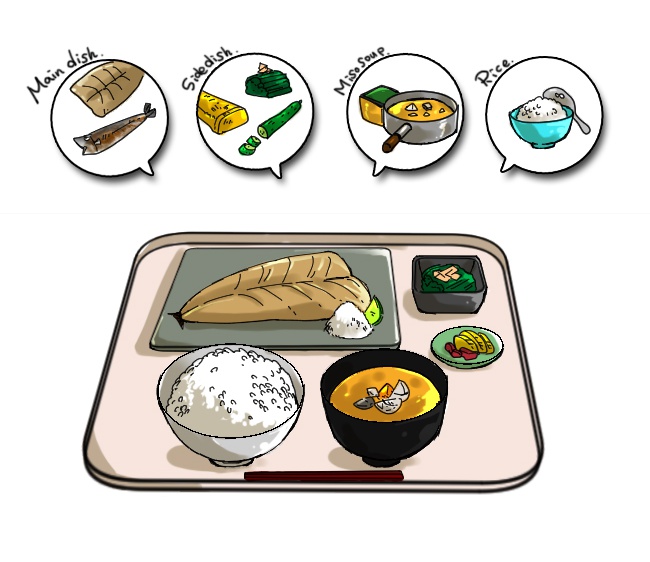
Just like in Western culture, there is an etiquette for where each item in teishoku is placed. Most meal sets should be positioned in front of you with rice at your left side, soup at your right side, and the main item positioned to the back. Generally the more important item is placed on the left in Japan, which is where the rice is positioned. But it's perfectly fine to position the foods in an order you feel most comfortable with.
Teishoku is commonly served in local eateries and family restaurants for lunch and dinner, but some restaurants have been serving small meal sets for breakfast as well. Eating a meal composed of many small dishes is very much like Japanese home cooking, so teishoku dining can be seen as the Japanese equivalent of getting a quick home-style meal away from home. It’s a healthy, convenient, and affordable meal option for people of all demographics, from families with small children to office workers.
Types of Teishoku: Tonkatsu Teishoku, Sashimi Teishoku and More

Common types of teishoku include tonkatsu (pork cutlet), yakizakana (grilled fish), and tempura (deep-fried battered fish and vegetables). These main dishes are served on a tray along with a bowl of rice, a bowl of miso soup, and various side dishes known as souzai, such as salads and Japanese pickles.
It’s not unusual for Japanese restaurants to offer one or two teishoku set options on their menu or some kind of daily special. The teishoku set will usually be named after the main dish so you’ll have a clear idea of what’s included when you order. Sometimes a special seasonal rice is served, or a rice ball with other ingredients in the middle is offered instead of plain white rice. Meal sets in which the main dish is a type of soup, such as the Pork Soup Meal, do not include an additional bowl of soup on the side.
On average, a meal set will cost around 500 to 1,000 yen.
How to Order Teishoku

In a typical family restaurant, you order at your table. The waiter will ask you about which options you’d like to select, bring you your meal and bill, and then you pay at the cash register once you’ve finished.
To order your teishoku meal, first specify which main dish you’d like as well as the serving size if different sizes are available. Most restaurants and cafeterias offer a regular size, called “nami”, and a large size, called “oomori”. Then select your rice. Some eateries may offer different styles of rice and the choice of a small serving, medium-sized serving, or large serving. You may be able to get a refill on your rice, as well. Just ask for seconds or “okawari”.
In some eateries, you’ll pick up a tray and go down a deli line, selecting the different components of your meal, and then pay at the end before sitting down to enjoy your food. These public cafeterias, or shokudo, are popular amongst office workers looking for a quick and convenient meal on their lunch break.
If you’re picking your dishes at a cafeteria, you’ll typically have the choice of selecting two to three side dishes from the various options available, while at restaurants the side dishes tend to come predetermined. However, many restaurants will allow you to order extra side dishes for an additional fee. Some teishoku meals may also include a drink or dessert options.
The Components of Teishoku
Main Dish
Teishoku meals offer a range of dishes for the main, from delicious deep-fried foods to healthier fish options.

Some deep-fried teishoku dishes include tonkatsu, breaded and deep-fried pork cutlet, kara-age (fried chicken), battered and fried tempura, and also ebi furai (fried prawns), which is similar to tempura but the prawns are breaded rather than battered before frying.
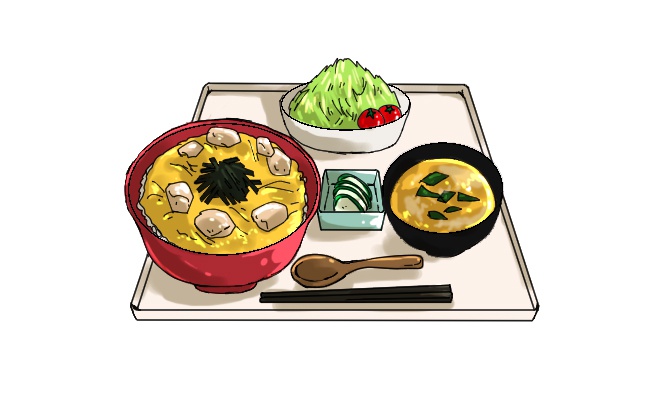
Rice and noodles can be teishoku mains. Donburi is a bowl of rice topped with some type of braised or stewed dish. For example, oyako-don (meaning “parent and child”) is chicken and egg stewed with onions in a sweet soy sauce and dashi broth served over rice, while gyu-don is thinly sliced beef simmered in sweet soy sauce and dashi with onions. Noodle dishes such as udon wheat noodles and soba buckwheat noodles, which can be served hot or cold, can feature as main components of teishoku meals.

Fish is a popular main dish for teishoku. Grilled, broiled, and stewed fish dishes are a healthy teishoku selection, such as sanma shioyaki (salt grilled Pacific saury) or saba no misoni (mackerel braised in a miso sauce). Sashimi teishoku can be a bit of a splurge for lunch, but it makes for a healthy and delicious meal. Some restaurants have daily specials that change on a daily basis, giving you the advantage of ordering something different every day at the same restaurant.
Other teishoku main dishes may include yakiniku, gyoza, nabe and more.
Side Dishes
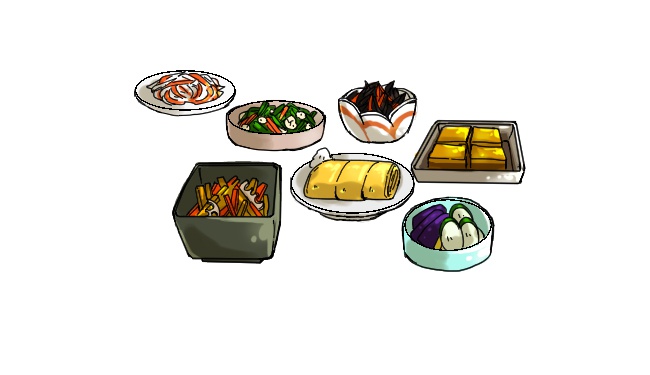
One of the best things about teishoku is the wide variety of side dishes that accompany it, allowing you to enjoy many different flavors and textures. These include healthy salads like shiro-ae (mashed tofu salad), carrot and daikon radish, kinpira gobo (burdock root salad), and hijiki seaweed salad. Japanese pickles, known as “tsukemono”, are another frequent accompaniment and are made from cucumber, radish, cabbage, and other vegetables.
For a heartier side, you may want to try tamagoyaki, a sweet and savory Japanese rolled omelet, or agedashi tofu, which is deep fried tofu in a dashi broth.
Miso Soup
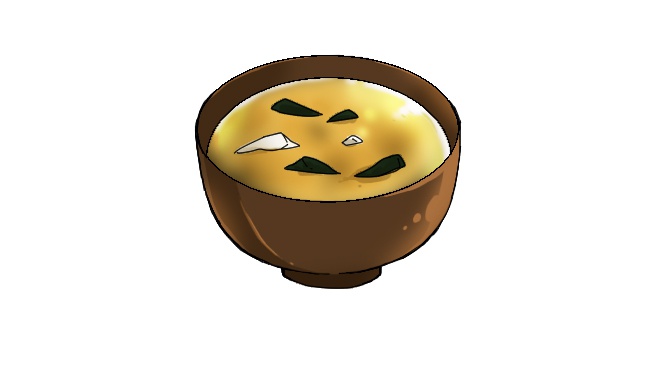
Miso soup is another essential component for teishoku meals. It will almost always be included in a teishoku set, unless the main dish is already a soup. Made from dashi broth and miso soybean paste, miso soup can also include ingredients like tofu and wakame seaweed. The probiotics in the miso can aid digestion, and it goes well with rice. Other similar soups that may accompany teishoku meals can include meat, fish, and seafood, such as tonjiru soup with pork and asari no miso-jiru made with clams.
Rice
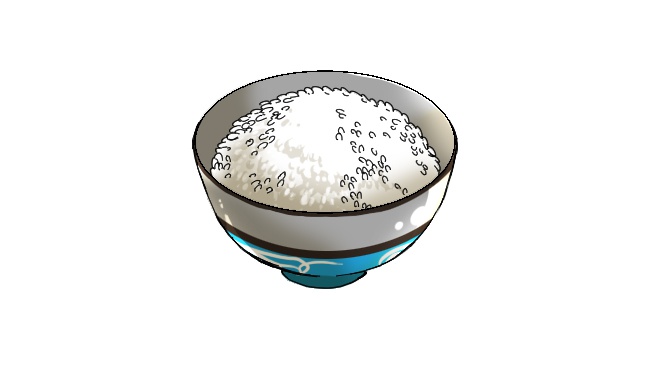
Short-grained white rice is the heart of Japanese food and central to any teishoku meal. It’s available in many different domestic varieties, with the most well-known being-known being koshihikari. For an additional nutritional benefit look for hatsugamai, sprouted rice which has macrobiotic properties, or zakkoku gohan, assorted grain rice made with as many as 16 or 20 varieties of grain.
Try Teishoku in Japan, for Set Meal That Is like a Personal Banquet!
Teishoku dining is an excellent way to sample many authentic Japanese dishes in a casual, unassuming atmosphere. The next time you’re in Japan, why not order a teishoku meal at your local eatery or a family restaurant? Check out Gurunavi’s list of places you can eat a teishoku meal in Japan.








